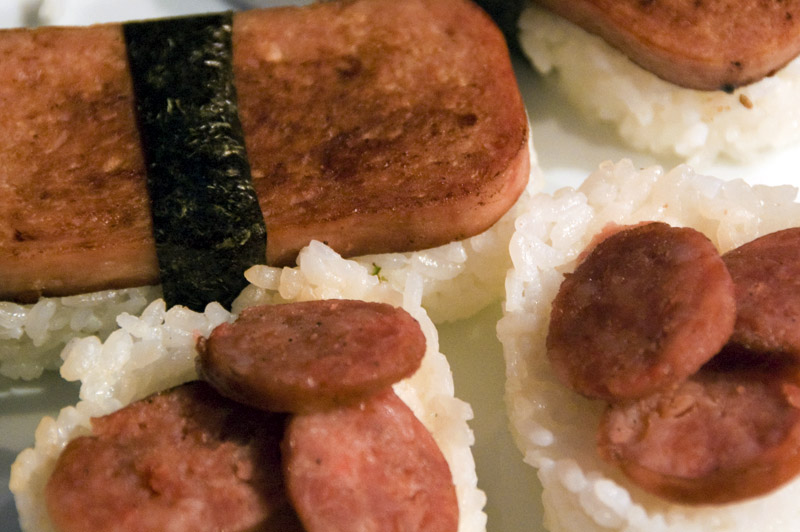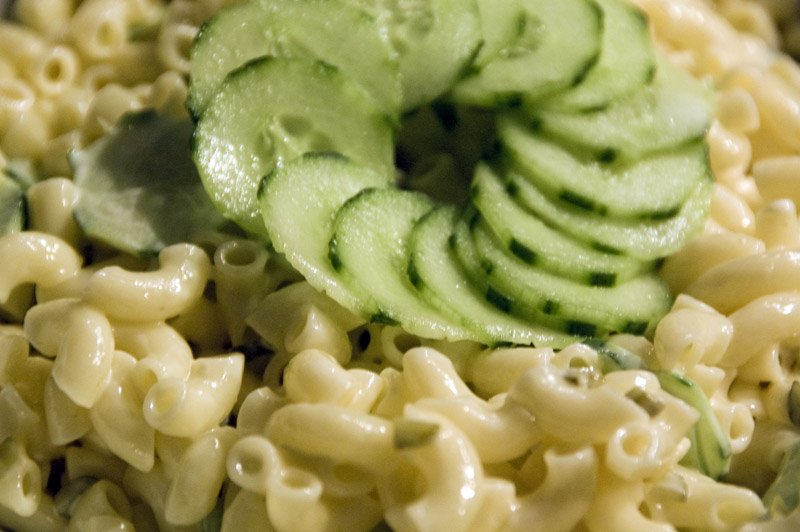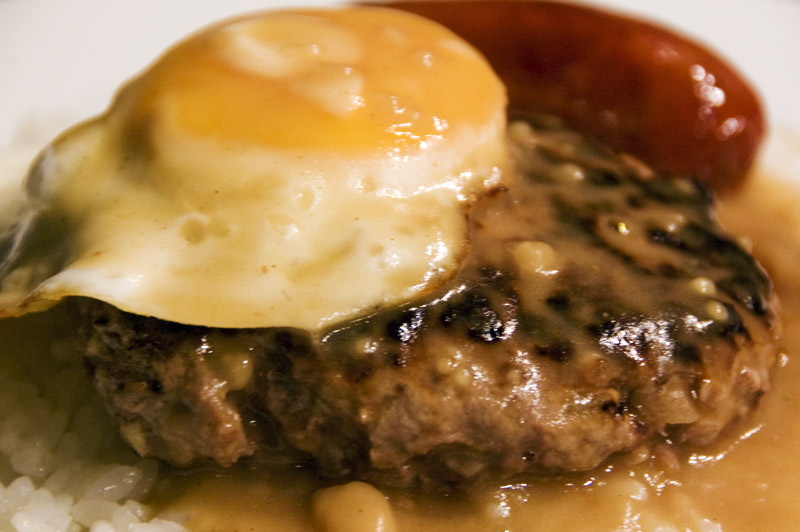It was at La Rotisserie Sainte-Marthe: A fantastic little hole in the wall in a not-yet-gentrified part of the 10th arrondisement, whose mission, actually, is to keep its little corner from gentrifying. As such, it serves €5 meals to local immigrants and pensioners and broke-asses at lunch time. At night, it transforms into a restaurant associatif – meaning that non-profit organizations can take it over to serve food for fund raisers. Again, to avoid yuppification and to make it accessible to all, there's a €10 price cap.
When we learned that two Franco-Mexican organizations were having a dinner there, it was a no brainer. A tenner for three courses, and beer or wine at laughably low prices. But we'd probably have paid Pierre Gagnaire prices for the food we had. Proper guacamole, a smokey/spicy salsa verde, several carnitas tacos with nopales (cactus), and a humble dessert of strawberries and cream. A simple meal, but one made with real Mexican authenticity never seen in the public sphere on this side of the Atlantic. Take your Michelin-starred restaurants and give 'em a Dirty Sanchez, homes. This shit is soul food for la raza. (Admission: Neither of us is a vato loco.)
We also managed to pick up a huge stack of real corn tortillas, a rare treat. Even rarer not knowing when the next Mexican night at La Rotisserie will be.
Fast forward to tonight. AKA fridge-clearing night. AKA soup night. We've got some quality ground beef left over from Loco Moco, aforementioned corn tortillas, some avocado, a tomato and a half, a carrot... What sort of soup dish could I bash together on this windy, wet night? Tortilla soup is always a winner. And so is albondigas (meatball) soup. I know, let's bastardize these fine specimens of Mexican tradition.
And thus, El Bastardo was born.
Unlike myself, it's not at all a fucked up combo. In fact, people have probably done it before. I mean, why not? They go together so well. And it's so easy.
1) Make some albondigas. Mix ground beef with finely chopped onion, garlic and carrots. Hit it with ground cumin and a bit of salt. Then add a beaten egg, or it won't hold together. You can cook the meatballs separately and add them to the soup just before serving, or you cook them in the soup. We opted for the previous to make sure they held.
2) Make your soup. Since this was a fridge-clearing operation, we diced up some onion, more garlic, whatever tomato we had left, and coined some carrots. They were sautéed in cumin, salt and powdered dry chili, and once adequately softened, about 600ml of beef stock was added to the pot. (You can use any kind of stock, really...) A bit of tomato paste was added to redden it. Keep that stuff simmering.
3) Slice your corn tortillas into thin strips, pan-fry them in a bit of oil, allow to dry on a cooling rack. If you don't feel like going through the frying step, you don't have to – especially if you've got stale corn tortillas. They're gonna get all soft in the soup anyway. But it really does taste better fried.
Ladle out some soup into a bowl. Lay in a handful of fried (or stale) tortilla strips. Ladle some more soup. Gently cup the balls and gingerly arrange them nicely in the bowl. Garnish with slices of avocado, roughly chopped cilantro (coriander if you swing that way), and a dollop of sour cream (crème fraiche if you swing that way), and you're set.
It's healthy. It's well balanced. And it'll satisfy you on a chilly night like almost nothing else.
Is it authentic? Well, that's relative. If you're anywhere in North America, hell no, esse.
If you're anywhere in Europe (that includes you, España!) it's better than you'll do at any so-called Mexican restaurant. Es una garantiá.
When we learned that two Franco-Mexican organizations were having a dinner there, it was a no brainer. A tenner for three courses, and beer or wine at laughably low prices. But we'd probably have paid Pierre Gagnaire prices for the food we had. Proper guacamole, a smokey/spicy salsa verde, several carnitas tacos with nopales (cactus), and a humble dessert of strawberries and cream. A simple meal, but one made with real Mexican authenticity never seen in the public sphere on this side of the Atlantic. Take your Michelin-starred restaurants and give 'em a Dirty Sanchez, homes. This shit is soul food for la raza. (Admission: Neither of us is a vato loco.)
We also managed to pick up a huge stack of real corn tortillas, a rare treat. Even rarer not knowing when the next Mexican night at La Rotisserie will be.
Fast forward to tonight. AKA fridge-clearing night. AKA soup night. We've got some quality ground beef left over from Loco Moco, aforementioned corn tortillas, some avocado, a tomato and a half, a carrot... What sort of soup dish could I bash together on this windy, wet night? Tortilla soup is always a winner. And so is albondigas (meatball) soup. I know, let's bastardize these fine specimens of Mexican tradition.
And thus, El Bastardo was born.
 |
| This tortilla soup has three balls |
1) Make some albondigas. Mix ground beef with finely chopped onion, garlic and carrots. Hit it with ground cumin and a bit of salt. Then add a beaten egg, or it won't hold together. You can cook the meatballs separately and add them to the soup just before serving, or you cook them in the soup. We opted for the previous to make sure they held.
2) Make your soup. Since this was a fridge-clearing operation, we diced up some onion, more garlic, whatever tomato we had left, and coined some carrots. They were sautéed in cumin, salt and powdered dry chili, and once adequately softened, about 600ml of beef stock was added to the pot. (You can use any kind of stock, really...) A bit of tomato paste was added to redden it. Keep that stuff simmering.
3) Slice your corn tortillas into thin strips, pan-fry them in a bit of oil, allow to dry on a cooling rack. If you don't feel like going through the frying step, you don't have to – especially if you've got stale corn tortillas. They're gonna get all soft in the soup anyway. But it really does taste better fried.
Ladle out some soup into a bowl. Lay in a handful of fried (or stale) tortilla strips. Ladle some more soup. Gently cup the balls and gingerly arrange them nicely in the bowl. Garnish with slices of avocado, roughly chopped cilantro (coriander if you swing that way), and a dollop of sour cream (crème fraiche if you swing that way), and you're set.
It's healthy. It's well balanced. And it'll satisfy you on a chilly night like almost nothing else.
Is it authentic? Well, that's relative. If you're anywhere in North America, hell no, esse.
If you're anywhere in Europe (that includes you, España!) it's better than you'll do at any so-called Mexican restaurant. Es una garantiá.










































